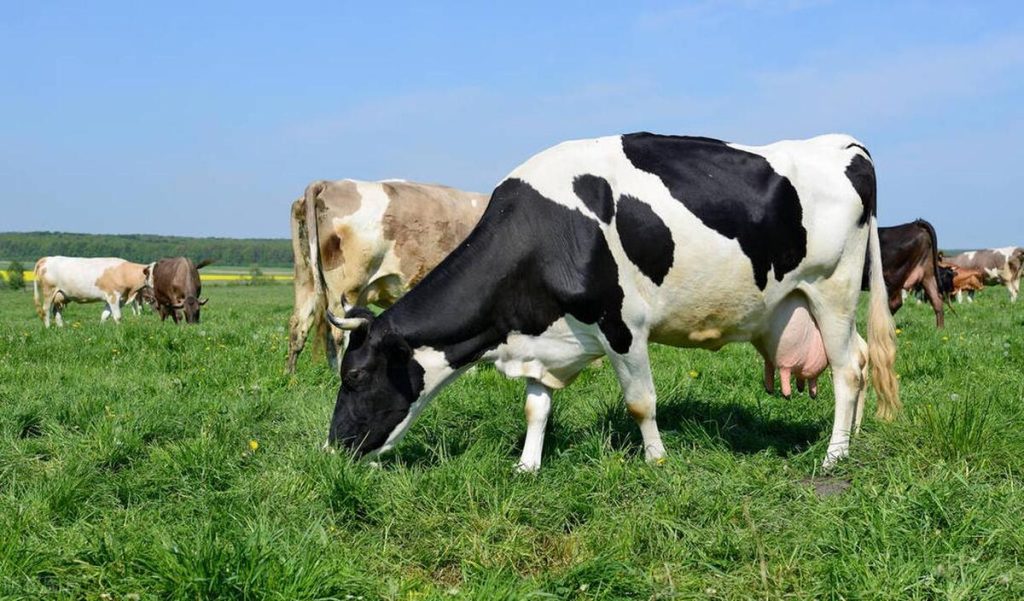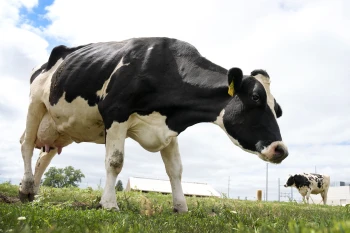Situated amid the pastoral landscapes of Ames, Iowa, the National Animal Disease Center (NADC) may initially present itself as an ordinary farm. With cows grazing in sprawling pastures and the rustic structures typical of agricultural settings, one could easily overlook its significance.
However, upon closer inspection, the NADC emerges as a crucial government research facility dedicated to the study and prevention of animal diseases, specifically in the wake of the recent avian influenza outbreaks affecting livestock in the United States.
Established in 1961 and encompassing a robust staff of 43 scientists, the center is at the forefront of safeguarding animal health and, by extension, public health, through innovative research and vaccine development.
The NADC’s history is marked by significant contributions to veterinary medicine, particularly in combating serious diseases that jeopardize livestock.
Over the years, researchers at the center have developed vaccines against a host of diseases that threaten pigs and cattle, such as hog cholera and brucellosis.
The institution’s reputation was further solidified during the H1N1 influenza pandemic in 2009, when its researchers successfully demonstrated that the swine flu virus was limited to the respiratory tract of pigs, ensuring that pork remained safe for consumption.
Such historical achievements highlight the center’s pivotal role in maintaining animal health and protecting the interests of both farmers and consumers.
The emergence of H5N1 avian influenza in U.S. dairy cows this year has entered the spotlight, presenting a new challenge for the scientific community.
This revelation – that a strain of virus typically associated with poultry could infect dairy cows’ udders and milk – signifies a shift in understanding flu’s cross-species transmission.
Traditionally, avian influenza is predominantly viewed as a respiratory disease; therefore, its unexpected appearance in bovine species raises pressing questions for researchers and emphasizing the need for urgent responses.
The transition from investigating avian influenza primarily in birds to studying its implications in cattle illustrates a dynamic evolution in the understanding of zoonotic diseases, or those that can jump from animals to humans.
Due to the potential risks associated with such viral transmissions, particularly concerning public health, the role of the NADC has become increasingly critical. As reported, scientists like Kaitlyn Sarlo Davila are engaged in research to unravel the complexities of this novel infection and its implications for animal and human health.
In response to the urgent challenge posed by H5N1 in dairy cows, the NADC has refocused its efforts toward developing a targeted vaccine.
Under the leadership of researchers such as Amy Baker, who has garnered recognition for her work on influenza in pigs, the center is exploring vaccine candidates that might mitigate the spread of this virus among bovine populations.
Preliminary results are anticipated soon, emphasizing the center’s commitment to fostering innovative solutions in the face of infectious disease outbreaks.
The development of a vaccine against avian influenza in cattle not only holds the promise of curbing the spread of the disease among livestock but also serves a broader purpose in safeguarding human health. The interactive dynamics between animal diseases and potential human infections underline the importance of the center’s research efforts.
As evidenced by the statement from USDA spokesperson Shilo Weir, the work remains promising yet still in the early stages, reflecting the complexities involved in vaccine research and development.
The NADC is equipped with a variety of resources that facilitate its extensive research agenda. The expansive campus, comprising 93 buildings, includes high-containment laboratories that enable scientists to safely work with dangerous pathogens such as H5N1.
This level of containment is vital for conducting research that entails interaction with infectious agents, thereby ensuring the safety of both the researchers and the surrounding community.
The facility’s design, which shares similarities with modern academic institutions, underlines its role as a center for knowledge creation and scientific advancement.
Additionally, the context in which the center operates is essential to its efficacy. The collaborative efforts of the center’s researchers, as articulated by Mark Ackermann, the director of the NADC, highlight the commitment of the staff to rise to the occasion amid challenging circumstances.
The center employs about 660 individuals, with one-third assigned directly to the animal disease center, which operates on an annual budget of $38 million.
This substantial investment in animal health research reflects the significance placed on addressing the emerging threats posed by infectious diseases.
The work of the NADC extends beyond mere animal health; it encapsulates a broader commitment to safeguarding public health.
The interplay between animal diseases and their potential repercussions on human populations is a critical area of concern for public health officials and scientists alike.
As a hub for research and vaccine development, the NADC plays a vital role in preventing zoonotic diseases, ultimately aiming to ensure the health of both livestock and the greater population.
The emergence of avian influenza in dairy cows serves as a reminder of the delicate balance within ecosystems that encompass human, animal, and environmental health. It underscores the necessity of vigilance and rapid response in the face of evolving pathogens.
The research conducted at the NADC represents a proactive stance in addressing these challenges, highlighting the importance of sustained funding, collaboration, and innovation in the pursuit of effective disease management strategies.
In recent years, Baker and a team of researchers have embarked on a comprehensive investigation aimed at elucidating the mechanisms by which a particular virus propagates among bovine populations.
This research is being conducted within a high-containment facility, where scientists and animal caretakers don specialized respirators and protective gear to minimize exposure and ensure safety.
The experimental design involved exposing four yearling heifers to a mist containing the virus, followed by the deliberate introduction of the virus into the teats and udders of two lactating cows.
The results of this study indicated that while the initial four cows became infected, they exhibited only mild symptoms; conversely, the two cows that received the direct viral exposure experienced more severe health issues, including reduced appetite, a significant decline in milk production, and the secretion of thick, yellowish milk.
These findings led to the critical conclusion that the virus predominantly spreads through milk containing elevated viral loads, which may subsequently transmit through shared milking equipment or other vectors.

This conclusion aligns with the existing understanding among health investigators regarding the virus’s transmission pathways, although the research was deemed essential due to the challenges associated with obtaining comprehensive data from dairy farms, as noted by Webby.
He expressed that prior to this investigation, researchers could only formulate educated hypotheses regarding the virus’s circulation. Additionally, scientists from the USDA are conducting further studies to analyze the blood of calves that have consumed raw milk for indicators of infection.
A collaborative study led by the Iowa center and several universities revealed that the virus was likely circulating undetected for months before its official identification in Texas in March.
Notably, the study also identified a rare genetic combination within the bird flu virus that has crossed over into cattle, prompting researchers to investigate whether this genetic variation has facilitated the virus’s spread among bovines or enabled its transmission to other species.
Tavis Anderson, who played a pivotal role in the research, emphasized the ongoing nature of this inquiry, stating that the team anticipates being engaged in this line of research for years to come.
He posed critical questions regarding the potential existence of unique influenza strains in cattle, the possibility of transmission from cows back to wild birds, and the implications of interspecies transmission involving humans and pigs.
Understanding these complex dynamics represents a paramount research objective, underscoring the necessity for continued investigation into the intricate relationships between viral pathogens and their hosts.
In conclusion, the National Animal Disease Center stands as a testament to the intersection of agricultural science and public health policy in combating emerging infectious diseases.
Through its innovative research, the center plays a crucial role in addressing the complexities posed by the H5N1 avian influenza outbreak in dairy cows and enhancing vaccine development efforts.
The findings and innovations emerging from this esteemed institution not only fortify the health of livestock but also constitute a significant investment in the protection of public health.
As the landscape of infectious diseases continues to evolve, the NADC’s efforts will undoubtedly remain at the forefront of maintaining the delicate balance between animal health and human safety.
